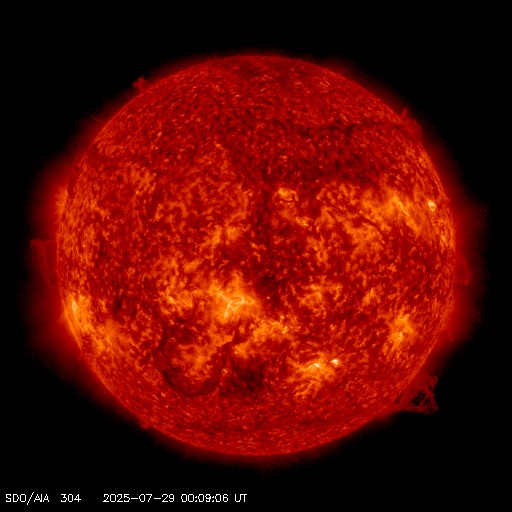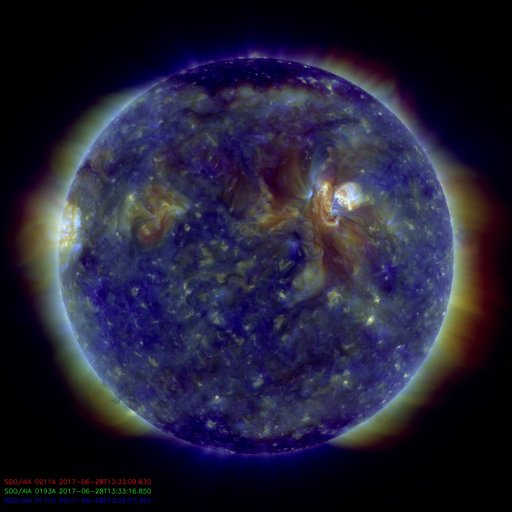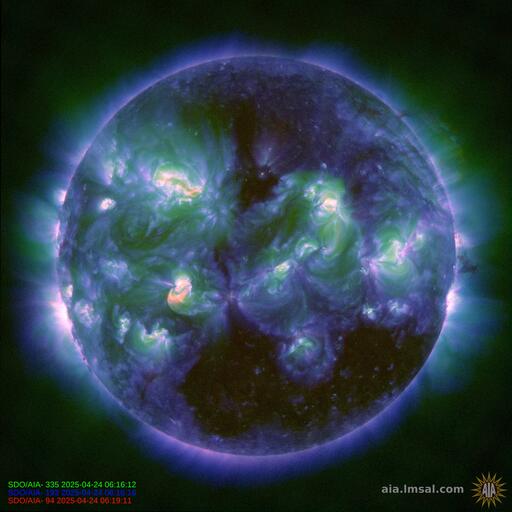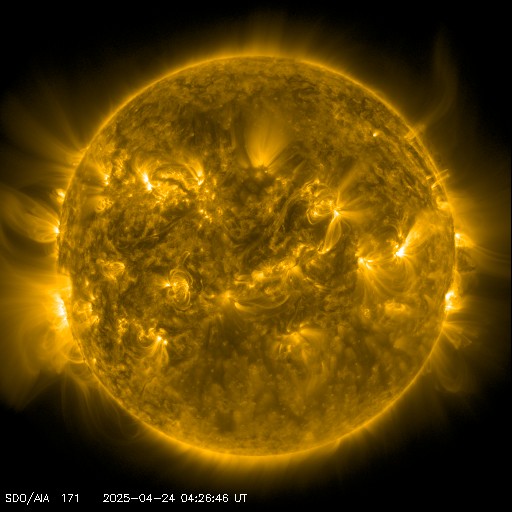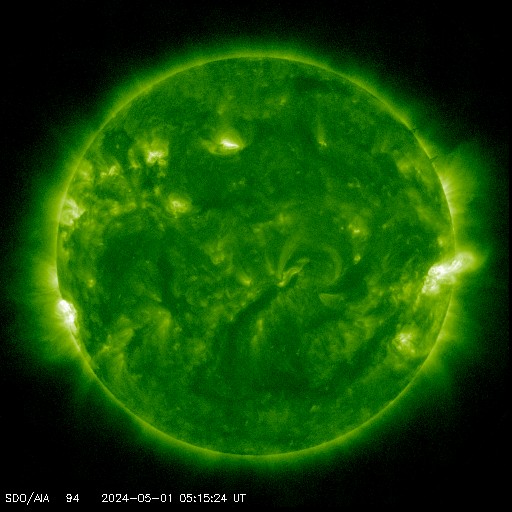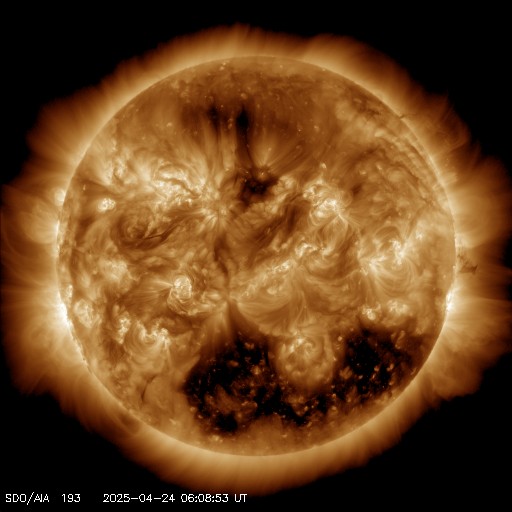Solar Alerts Monitoring
Friday, April 13, 2012
Geomagnetic Storm / Mid Latitude Aurora
The Coronal Hole High Speed Stream winds have stired up a G1 storm and a mid latitude Aurora. Will you be able to see the Aurora from your location? Click here OVATION Auroral Forecast, to see where the Aurora can be see from. Research more about the Aurora in our Q an A guides Q&A/Guides. The effects of the CHHSS are expected to continue through the 13th before diminishing on the 14th and returning to quiet levels on the 15th.
Space Weather Message Code: ALTK05
Serial Number: 682
Issue Time: 2012 Apr 13 0234 UTC
ALERT: Geomagnetic K-index of 5
Threshold Reached: 2012 Apr 13 0207 UTC
Synoptic Period: 0000-0300 UTC
Active Warning: Yes
NOAA Scale: G1 - Minor
Potential Impacts: Area of impact primarily poleward of 60 degrees Geomagnetic Latitude.
Induced Currents - Weak power grid fluctuations can occur.
Spacecraft - Minor impact on satellite operations possible.
Aurora - Aurora may be visible at high latitudes, i.e., northern tier of the U.S. such as northern Michigan and Maine.
Wednesday, April 11, 2012
Rapidly developing Sunspot Region bursts onto the surface.S1576 [N07E23], (1455?)
Beginning at approximately 19:54UTC on April 10 2012 a new Sunspot Region exploded onto the surface in a spectacular display from new region S1576 [N07E23], having just emerged with an east-west inversion line. This region is not yet numbered by NOAA/SWPC, but it is anticipated that it will be numbered Region 1455 later on today. This new region is shown imaged left by the SDO Magnetogram. An animated gif of the Magnetogram showing the rapid development of this region is below and can be viewed by clicking on the image. This region will be rotating toward a more Earth aligned position over the next couple of days increasing the chances of activity from this region becoming geoeffective.
Wednesday, March 28, 2012
Solar Sector Boundary Crossing
A solar sector boundary crossing (polarity of the IMF reverses) indicated by ACE data has been responsible for the unsettled geomagnetic field. A high latitude Aurora Watch will be in effect over the next 24-48 hours. A favorably positioned negative polarity coronal hole is expected to continue to keep our geomagnetic field unsettled through March 29, 2011 UTC. Old Sunspot Region 1429 is expected to return to the solar disk midday on March 29th which should increase M-class flare probabilities.
SOHO LASCO observed a full asymmetric halo CME on the 26th @ 23:12 UTC which was associated with Type II & Type IV radio sweeps. This CME was determined to be a backsided event according to NOAA and not expected to be geoeffective.
Although there was a large Sf and CME from old Sunspot Region 1429 that contributed to this halo CME there was also a filament eruption from the NE limb immediatly after, followed by a C5.3 flare the 27th @ 02:50 UTC with an associated CME (seen on SDO) from Sunspot Region 1444. We expect this latter CME to be geoeffective.
Here on the left we can see a CME associated with the C5.3 Sf from Sunspot Region 1444 as seen from SDO AIA 304 on March 27th at 2:57UTC.
Saturday, March 24, 2012
Sunspot 1444 Growing Fast
We are seeing some rapid growth today within Sunspot Rregion 1444 located in the northeast region of the solar disk. Region 1444 is yet another reversed polarity sunspot located in the northern hemisphere of the solar disk. We are watching this Region for continued growth as it moves into a more Earth facing position.
The last reversed polarity sunspot we saw was Sunspot Region 1429 (also located in the northern hemisphere) that started its earth facing activity with a M3.3 flare on March 2, 2012 . To the left, we can see old Region 1429 as it appears on the STEREO Behind EUVI 195 image from today. 1429 has survived its transit on the backside of the Sun, and should be coming back into an Earth facing position around March 28th-30th.
You can view all reports we did on sunspot region 1429 Here:
http://mysolaralerts.blogspot.com/search?q=1429&max-results=20&by-date=true
.
Subscribe to:
Comments (Atom)

